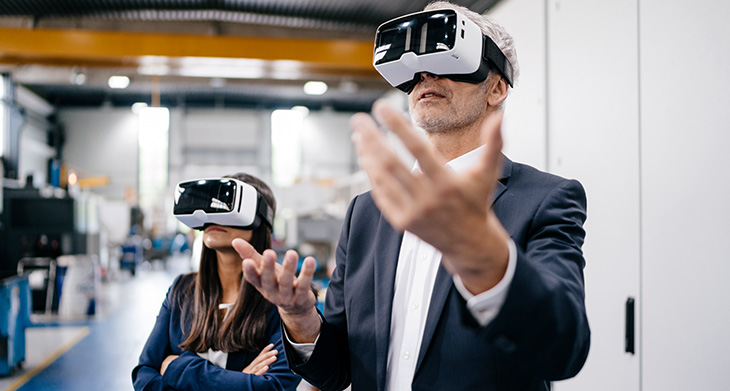Commerce Applications
Already, corporations are racing to carve out their own business niches in the new metaverse marketplace. Brands such as Coca-Cola, Gucci, Hyundai and Nike have metaverse presences where visitors can trade NFTs and engage in innovative ways with brand merchandise.
Beyond brand building, businesses are increasingly understanding the metaverse is where business will be done in the future.
Hoping to stay ahead of this migration curve, JPMorgan Chase & Co. launched a lounge in Decentraland, a popular blockchain-powered metaverse virtual realm. There, visitors can trade NFTs and purchase other virtual goods.
Other companies are racing to invest in metaverse land sales, where one virtual plot sold for $4.3 million on the popular metaverse site Sandbox, and another sold for $5 million on the relatively new metaverse platform TCG World.
These metaverse business transactions are just the beginning. Shortly, we’ll begin to see industries, businesses and service sectors using the metaverse for everything from employee training to product design to supply chain optimization. Consider the possibilities:
- Architecture firms could showcase their designs to potential clients using immersive, online 3D studio spaces.
- Surgeons could train virtually to perfect new medical procedures using AI-powered augmented reality software.
- Materials suppliers could fine-tune their global distribution systems to maximize efficiency and cut waste.
- Automotive manufacturers could test and perfect new car designs virtually, before investing in physical production.
- Universities could offer more enhanced, engaging online learning platforms for remote students.
- Physicians could provide virtual customized care for patients in underserved areas where little other access to specialized health services exists.
- Firms could host collaborative, immersive whiteboard meetings with employees from across the globe.
All of this, and much more, can be accomplished in the metaverse — without the time and materials costs of equivalent “real-world” processes.
Plan Now for the Digital Future
The vast, and as yet untapped, possibilities of the metaverse are poised to add $5 trillion to the global economy by 2030, experts say.
In fact, over the next five to 10 years, as metaverse usage becomes more widespread, it’s going to become clear to everyone that the potential for this digital technology is, literally, limitless.
So, if you haven’t been paying attention to the metaverse, now is the time to start.
Begin by researching what other players in your industry or corporate sector are currently doing in this new digital space. Then, ask yourself whether you should be taking similar steps — or different ones, altogether.
You can shape a proactive metaverse adoption plan by considering key questions:
- Will a lack of investment in the metaverse now potentially negatively impact your business in five to 10 years?
- What targeted ROIs do you hope to see from a potential metaverse presence?
- How will you measure the success of your meataverse adoption? What key performance indicators are you after?
- Does your company have adequate in-house assets to make this digitial leap, or will you need outside help?
The metaverse will certainly play a key role in the future of business. Exactly what role will become clearer in the next five years.
But in this instance, waiting for the fog to clear may be fatal — in a business sense, anyway.
The firms and companies who stand to stake a compelling claim in the metaverse’s new digital landscape are the ones who are busy strategizing now.
HOW WIPFLI CAN HELP
Interested in learning more about the metaverse? Our digital strategists can help you envision new and exciting ways to boost your business through immersive technology. Reach out. We’re ready to help.




